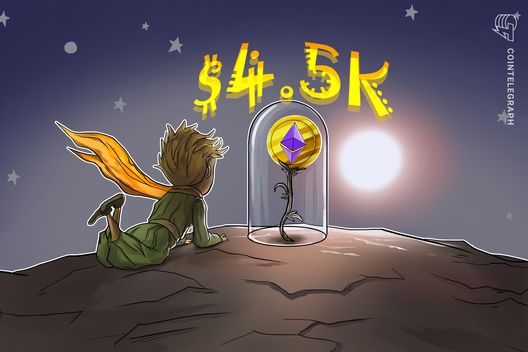

Ether (ETH) has recently experienced a surge in both price and futures open interest, sparking discussions about the sustainability of this rally. On Tuesday, Ether's price soared to $4,518, fueled by increased risk appetite among traders following a modest 0.1% rise in the U.S. consumer inflation.
The aggregate open interest in Ether futures has also reached a record high, climbing to $60.8 billion, a significant jump from $47 billion just a week prior. However, a deeper analysis reveals that this increase is largely due to ETH's price appreciation. In terms of Ether, the open interest remains 11% below the peak of 15.5 million ETH observed on July 27.
Derivatives data suggests a somewhat weak demand for leveraged bullish positions, despite the strong performance in the spot market. The annualized premium for ETH perpetual futures is currently at 11%, which is considered neutral. A premium above 13% would indicate excessive demand for leveraged long positions. The fact that this level hasn't been reached, even with the recent price surge, suggests a lack of aggressive momentum from traders.
Monthly ETH futures contracts, which are preferred by retail traders, typically trade at a 5% to 10% annualized premium to spot prices, reflecting the extended settlement period. After briefly reaching 11% on Monday, the premium fell back to 8% on Tuesday. This suggests that despite a 32% increase in ETH price over the past 10 days, leveraged long interest has not returned to the levels seen in previous bullish cycles.
Moreover, some major companies are exploring their own layer-1 strategies instead of building on Ethereum's layer-2 ecosystem. This trend could challenge Ethereum's dominance in the decentralized finance (DeFi) space.
The cryptocurrency market is currently experiencing a bullish trend, with Bitcoin nearing $122,000 and several altcoins reaching new all-time highs. Ethereum has also shown strong momentum, with analysts predicting a potential rally towards $4,522 if it overcomes the critical resistance level at $3,500.
However, institutional sentiment remains bearish, with Ethereum ETFs experiencing outflows. Some analysts also caution that the market may be approaching overbought conditions, which could lead to a correction or a spike in volatility.
Despite these concerns, Ethereum has demonstrated significant technical and fundamental strength. The recent passage of the GENIUS Act and the Clarity for Payment Stablecoins Act by the U.S. Congress has created a more favorable regulatory environment for Ethereum-based applications, particularly in DeFi. Additionally, the recent Pectra upgrade has made Ethereum faster and more efficient.
Overall, the surge in Ether's price and futures open interest reflects growing investor confidence and heightened market engagement. However, the sustainability of this rally remains uncertain, as derivatives data indicates weak demand for leveraged bullish positions and some major companies are exploring alternative layer-1 solutions. While the long-term outlook for Ethereum remains positive, traders should exercise caution and closely monitor market conditions.